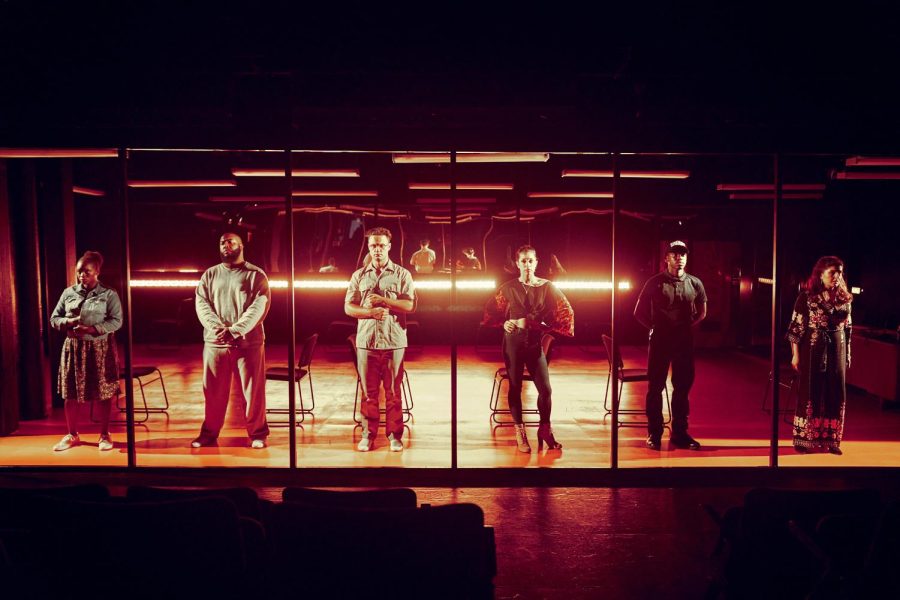‘Between the Bars’ Is a Breakout in the Conversation of Prison Reform
The HERE Arts Center delivers a powerful and gravitating performance on the urgency of prison rehabilitation
COURTESY OF MATI GELMAN
“Between the Bars,” a reflection on prison reform, captivates the audience and shows the hopelessness of life in prison.
October 13, 2021
“Where ever can one go to breathe? I search my memories bare. Perhaps I’ve missed an element which, combined would create air.” Following this commanding introduction ensued a pivotal performance of “Between the Bars,” a reflection on prison reform at the HERE Arts Center on the play’s opening night, Sept. 30. Written by playwright Lynn Clay Byrne and directed by Benjamin Viertel, the show was a 92-minute-long fight for justice and rehabilitation in a broken prison system.
In 2020, the onset of the pandemic led us all to learn a feeling we know all too well by now: loneliness. Months of solitude, barren of real-life experiences and integration into society, made the play markedly more powerful for the audience.
During the pandemic, there was hope for an end and time to reinvent ourselves; prisoners don’t get this luxury. For them, it is loneliness without salvation during their sentences, which reintroduced the importance of rehabilitation and prison reform into mainstream societal conversations.
The play is wholly set behind prison bars, which accentuates the physical separation between prisoners and society and the mental bars between a prisoner and the world they previously inhabited. Families and lovers visit the prisoners, which only heightens their relational disconnect. Throughout the show, no characters, prisoners or visitors leave the inside of the bars as they delve further into the issue of families whose mental states have been altered by those they visit.
The most important element of the play is the relationships: a verbally abusive relationship with a short-tempered man, a hopeful woman who dreams of a better life after her partner’s sentence is completed and a mother whose relationship with her son ultimately led to his destruction — twice — to name a few. Hopelessness looms over the theater: The prisoners’ souls begin to get lost in their cells, and family members can do nothing but watch it happen.
Perhaps this has to do with the prison system’s mishandling of inmates. Shouldn’t the point of prison be to decrease repeat offenses and make model citizens upon release? In the play, there are no innately violent criminals, but we see their spirits dim throughout the show’s run due to the lack of care and rehabilitation. Prison guards are corrupt and violence is regular. In the play, the lack of initiatives being done to aid prisoners’ spirits only makes them regress as people. These are public things most people already know and are disheartened by, so what is being done to change it?
They all had one thing in common: the yearning to learn from their mistakes and come out better on the other side.
Actor Chad Carstarphen was a standout: His portrayal of the characters Attis and Massud, two prisoners who committed petty crimes and struggle with their romantic relationships given their sentences, gave an introspective look into the psychology of the incarcerated. His wavering but never disappearing spirit throughout gave way to realistic insight on everyday prison life. His characters, as well as the others, gave an account of their mindsets, and they all had one thing in common: the yearning to learn from their mistakes and come out better on the other side. The play inspired audience members to join the larger conversation of how implementing rehabilitation while serving time could be improved.
The takeaway from the performance is simple: If prisoners can be surrounded by optimism and resources to learn and better themselves while also shattering as much corruption as possible, the number of repeat offenders will decrease and the prison system can rebrand itself as an environment for genuine improvement. “Between the Bars” did an impeccable job of addressing the urgency of this rehabilitation.

















